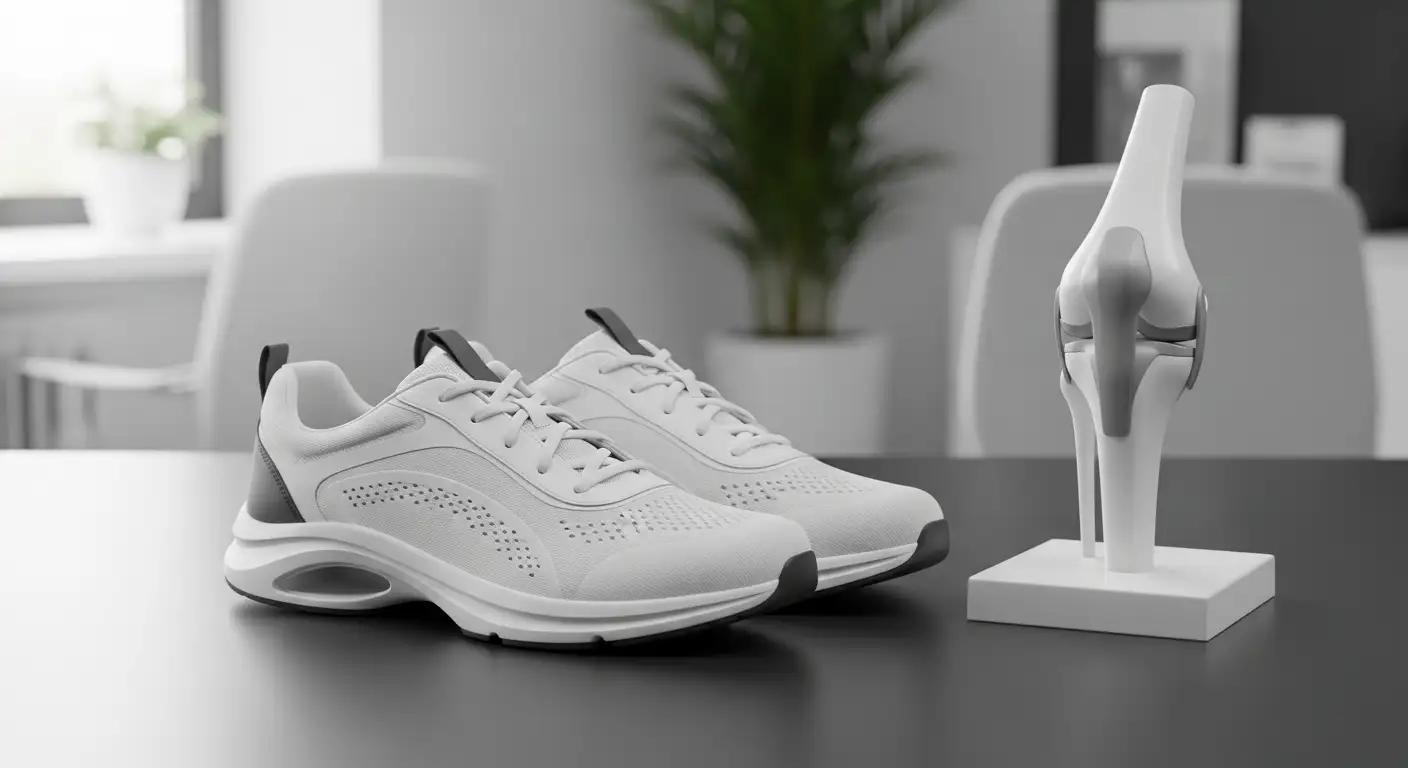Managing PCL Injuries
Navigating the process of posterior cruciate ligament (PCL) injury management can be a challenge. Understanding the nature of these injuries and the available nonoperative treatment options can provide valuable insights for effective recovery.
Understanding PCL Injuries
PCL injuries often occur as part of a multiligamentous knee injury, although they can occasionally occur in isolation. This ligament, located within the knee, plays a crucial role in stabilizing the joint and facilitating mobility.

Patients with chronic isolated PCL injuries may experience symptoms such as anterior knee pain, difficulty ascending stairs, and instability. These symptoms can significantly impact daily activities and overall quality of life, making it crucial to seek appropriate treatment promptly.
Nonoperative Treatment Options
Nonoperative treatment of isolated PCL injuries has proven to be notably effective in numerous cases. In fact, such treatment results in good subjective outcomes and a high rate of return to sport, according to a study published in PubMed Central. Even more promising, the same study provided evidence of successful healing on MRI following a nonoperative approach.
Specific rehabilitation strategies for nonoperative treatment of PCL injuries include avoiding posterior tibial translation in the initial period, followed by progressive range of motion and strengthening of the quadriceps and core musculature. These strategies aim to restore function, enhance strength, and promote healing, all while minimizing discomfort and the risk of further injury.
However, it's essential to note that the effectiveness of nonoperative treatment greatly depends on the individual's unique circumstances, including the severity of the injury, the individual's overall health, and commitment to the rehabilitation process. Therefore, it's crucial to consult with a healthcare professional to determine the best course of action for your specific situation.
In conclusion, understanding PCL injuries and the available nonoperative treatment options is a crucial step in the journey towards recovery. With proper management, it's possible to overcome these injuries and return to regular activities and sports.
Rehabilitation for PCL Injuries
Once the diagnosis of a Posterior Cruciate Ligament (PCL) injury has been confirmed, the focus shifts to the management and recovery process. Nonoperative treatment of isolated PCL injuries has been shown to result in good subjective outcomes and a high rate of return to sports [1]. Rehabilitation strategies play a crucial role in this phase.
Initial Rehabilitation Strategies
Nonoperative treatment options for PCL injuries may include the RICE method (rest, ice, gentle compression, elevation), and immobilization using a brace.
One of the key initial rehabilitation strategies includes avoiding posterior tibial translation. This is typically achieved by using a knee brace to limit movement, thus providing the injured area with the optimal environment for healing.
Physical therapy also forms a crucial part of the initial rehabilitation strategy. The aim is to restore knee function and strengthen supporting leg muscles, particularly the quadriceps.
Progressive Recovery Exercises
As the healing process progresses, the focus of rehabilitation shifts towards restoring the full range of motion and further strengthening the quadriceps and core musculature. This is achieved through a series of progressive recovery exercises that are designed to gradually increase the load and flexibility of the knee joint without causing additional injury.
At around the 12-week mark, patients may begin an interval running program, under the guidance of a physiotherapist or rehabilitation specialist. This helps to further increase the strength and flexibility of the knee, preparing it for more intensive activities.
Following the running program, agility work and progressive sports-specific training are introduced. These exercises are designed to help patients gradually return to their pre-injury activity levels, whether that involves competitive sports, recreational activities, or simple day-to-day tasks.
Throughout this progressive recovery process, it's important for patients to work closely with their healthcare provider or rehabilitation specialist. This ensures that the exercises are performed correctly and safely, reducing the risk of further injury and optimizing the recovery process.
By following these rehabilitation strategies, individuals with PCL injuries can look forward to a high rate of return to sports and a good overall outcome. It's important to remember, however, that every patient's recovery process is unique, and the timeline and specifics of the rehabilitation program will vary depending on the individual's specific needs and circumstances.
Surgical Options for PCL Tears
In certain cases, managing a posterior cruciate ligament (PCL) injury may necessitate surgical intervention. This section will delve into the indications for surgery and the process of PCL reconstruction.
Indications for Surgery
Surgery for PCL tears is typically recommended in specific circumstances. According to Sports Health, surgical treatment should be considered for individuals with grade III PCL tears, multiple ligament injuries like PCL and ACL tears, and knee instability that hasn't responded to nonsurgical treatments.
Additionally, OrthoInfo suggests that surgery might be advised for combined injuries or persistent instability and pain in isolated PCL tears. The ultimate goal is to restore stability, reduce pain, and enhance the function of the knee.
PCL Reconstruction Process
The process of PCL reconstruction involves replacing the torn ligament with a tissue graft. This graft can be either an autograft (from another part of the patient's body) or an allograft (from a cadaver donor).
The surgery is typically performed arthroscopically, which involves making small incisions. This approach is less invasive than traditional open surgery and has been associated with better outcomes, allowing patients to resume a wider range of activities after rehabilitation.
Recovery post-PCL reconstruction surgery is a gradual process that typically requires 6 to 12 months for a full recovery. Physical therapy plays a crucial role during this rehabilitation period, helping patients regain strength, mobility, and function in the knee.
In conclusion, while surgery is a significant step in the management of PCL injuries, it can be an effective solution for certain patients. By understanding the indications for surgery and the reconstruction process, patients can make informed decisions about the best course of action for their specific circumstances.
Post-Surgery Recovery
After undergoing surgery for a posterior cruciate ligament (PCL) injury, the post-operative period plays a crucial role in the patient's recovery. This phase comprises attentive postoperative care and the significant role of physical therapy in regaining knee strength and motion.
Postoperative Care
Proper care following PCL surgery is essential to ensure a successful recovery. This typically involves pain management, wound care, and gradual reintroduction of physical activity. Patients are usually advised to avoid posterior tibial translation in the initial period, followed by progressive range of motion and strengthening of the quadriceps and core musculature.
In addition to physical recovery, it's important to address any psychological barriers that may hinder the recovery process, such as fear of re-injury. By acknowledging and addressing these concerns, patients can approach their recovery with a more positive mindset and increase their likelihood of returning to pre-injury activities.
Physical Therapy Importance
Physical therapy plays a pivotal role in the recovery process following PCL surgery. It is typically initiated 1 to 4 weeks after the procedure, focusing on stretches and exercises to aid in recovery [4].
Through consistent and dedicated physical therapy, patients can effectively regain knee strength and motion. The therapy targets specific impairments such as muscle strength deficits, altered movement patterns, decreased knee joint proprioception, and increased knee laxity.
A full recovery from PCL reconstruction can take between 9 months and a year, with most individuals being able to return to pre-injury activities. Key to a successful recovery is the patient's commitment to the physical therapy regimen.
Understanding the importance of postoperative care and physical therapy can significantly aid in the management of posterior cruciate ligament (PCL) injuries, contributing to a successful recovery and return to normal activities.
Complications and Risks
Understanding the potential complications and risks associated with posterior cruciate ligament (PCL) injury management is essential. This knowledge will allow individuals to make informed decisions about their treatment options and recovery plans.
Potential Complications
While complications following PCL surgery are rare, there are risks associated with knee arthroscopy. These include infection, blood clots, damage to blood vessels or nerves, and ongoing knee pain [5]. It's also important to note that the surgery involves replacing the torn ligament with a tissue graft taken from another part of the body or from a human donor, which can introduce additional potential complications.
Risk Factors to Consider
Surgical treatment for PCL tears is a controversial topic in the medical community. It's usually reserved for the most severe tears and for individuals with multiple ligament injuries. Moreover, surgery is usually recommended for individuals with grade III PCL tears, multiple ligament injuries like PCL and ACL tears, and knee instability that has not responded to nonsurgical treatments.
Understanding these potential complications and risk factors can aid in effective PCL injury management. It's vital to discuss these factors with a healthcare provider before making any decisions regarding treatment options.
Long-Term Outlook
Navigating the journey towards recovery from a posterior cruciate ligament (PCL) injury involves careful consideration of long-term outcomes, including the timing and conditions for returning to sports and preventive measures to avoid future injuries.
Return to Sports Considerations
When it comes to resuming sports activities after a PCL injury, the individual's recovery progress plays a significant role. Nonoperative treatment of isolated PCL injuries has demonstrated good long-term outcomes, a high rate of return to sport, and evidence of successful healing on MRI.
Around the 12-week mark, patients may begin an interval running program, followed by agility work and progressive sports-specific training to facilitate a safe and effective return to sports.
However, it's crucial to note that patients who have had a PCL injury may experience long-term consequences such as knee pain, symptoms, recreational limitations, and an impaired quality of life. Many individuals do not return to sport and adopt a physically inactive lifestyle due to fear of re-injury.
Preventive Measures for Future Injuries
Protecting the knee from future injuries is a significant component of long-term PCL injury management. One of the key preventive measures involves strengthening the muscles around the knee, particularly the quadriceps and core musculature, as part of the rehabilitation process.
Additionally, individuals should consider adopting lifestyle changes, such as maintaining a healthy weight and engaging in regular low-impact exercises, to reduce the strain on the knee.
It's also crucial to use protective gear during sports or strenuous activities and to learn proper techniques and strategies to avoid undue stress on the knee.
Finally, regular check-ups with a healthcare professional can help monitor the knee's condition and implement any necessary interventions promptly.
While a PCL injury can be a challenging experience, with the right strategies in place, individuals can achieve successful recovery and resume their regular activities in a safe and sustainable manner.
References
[1]: https://www.ncbi.nlm.nih.gov/pmc/articles/PMC5970122/
[2]: https://orthoinfo.aaos.org/en/diseases--conditions/posterior-cruciate-ligament-injuries/
[3]: https://www.ncbi.nlm.nih.gov/pmc/articles/PMC6723618/
[4]: https://www.sports-health.com/sports-injuries/knee-injuries/posterior-cruciate-ligament-pcl-tear-treatment-options
[5]: https://my.clevelandclinic.org/health/diseases/21793-pcl-posterior-cruciate-ligament-tears





